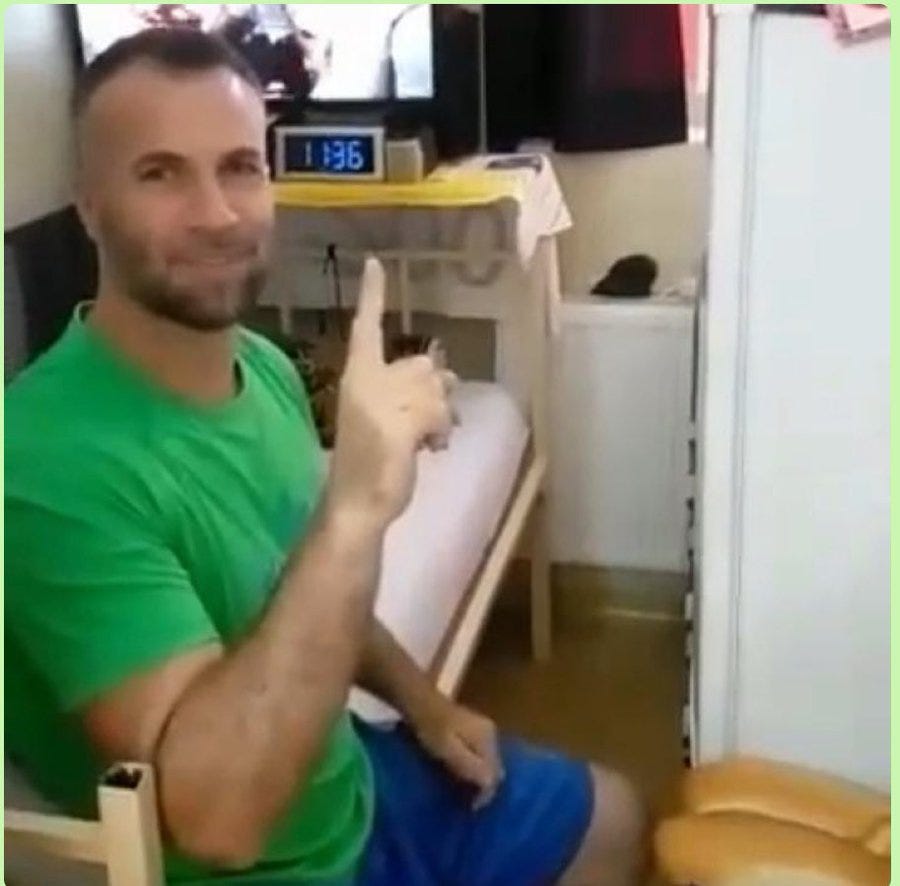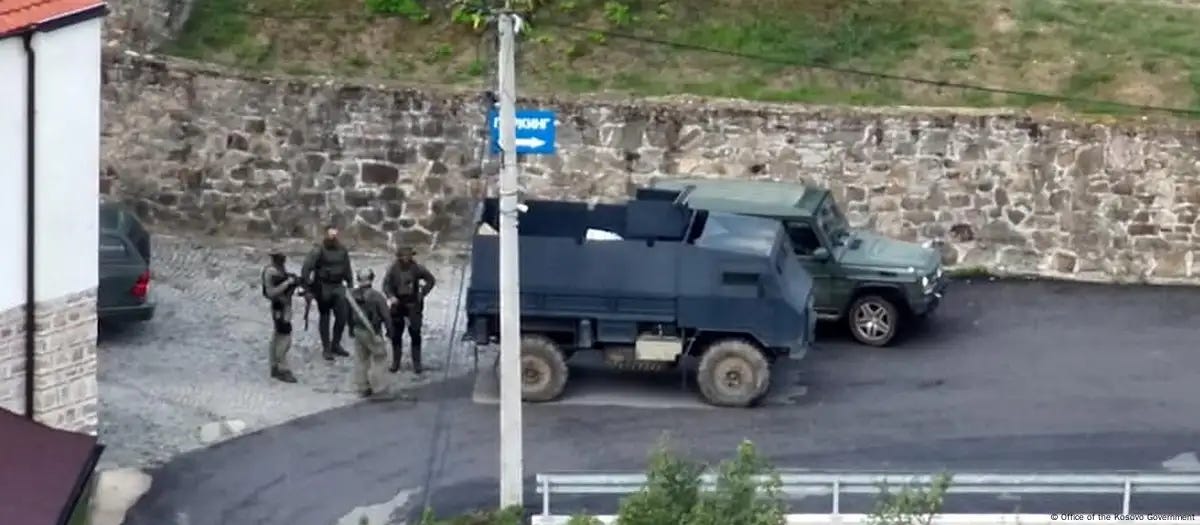A police officer was fatally shot and another wounded in Serbia near the western town of Loznica, around midnight, on July 18. The alleged gunman was Faton Hajrizi, an ethnic Albanian from the neighboring country and former Serbian province of Kosovo. The two officers apparently pulled Hajrizi over at a checkpoint in Lipnički Šor (which lies along the border with neighboring Bosnia & Herzegovina) while he was riding in a Mercedes-Benz along with another person, before Hajrizi exited the vehicle and began firing a handgun, hitting a 34-year-old officer in the chest and his partner in the shoulder, according to Serbian authorities.
A manhunt then ensued which included the assistance of Serbia’s counter-terrorism unit. According to Serbia’s Ministry of Interior, police finally caught up with Hajrizi, still in the vicinity, and a brief gunfight ensued before the latter was “liquidated”—as they put it. Pictures appeared on social media of what is allegedly Hajrizi’s body, along with a handgun. Serbia’s government describes the checkpoint shooting as a terrorist attack and Hajrizi as an “inveterate criminal”.
The person who had been driving Hajrizi was arrested, along with a couple of “Serbian nationality”. When police searched the vehicle, they found a passport from Kosovo and an identification card from Germany belonging to Faton’s younger brother, Artan, initially leading them to misidentify the shooter. Serbian officials believe that Faton stole his brother’s documents after escaping from Smrekovnica prison in Kosovo—his ninth escape—about ten days prior to the shooting. He had been serving a 27-year sentence for killing a Russian peacekeeper in Kosovo when he was just 15 years old.
Rather brazenly, and according to his own brother, Faton traveled to Germany very briefly after his escape, which is when he stole Artan’s documents from his residence before disappearing. Serbian authorities believe he traveled back to the Presevo Valley in the south of Serbia, and they are seeking his brother’s extradition from Germany for allegedly aiding the fugitive.
Faton was barely a teenager during Kosovo’s devastating 1998-1999 war with Serbia, which killed some 13,000 people. The war pitted a ragtag group of ethnic-Albanian guerrillas, known as the Kosovo Liberation Army (KLA, or UÇK in the Albanian language of Shqip), against what remained of a dramatically diminished Yugoslavia, following a minor conflict with Slovenia and two serious and often intertwined wars with Croatia and Bosnia, then finally the peaceful secession of Macedonia.
As an adult, Faton Hajrizi is widely accepted to have been a major KLA sympathizer by both Serbs and Albanians familiar with this story, and there has been speculation that he might have even had a guerrilla affiliation with the group prior to Kosovo’s declaration of independence in 2008 (presumably either before his arrest in 2000 or during one of his several prison escapes), though these claims remain difficult to confirm.
The Russian peacekeeper he shot was a soldier attached to the greater NATO-led KFOR mission following the end of hostilities in the country, which, as legend has it, happened after Faton took his own rifle from him. (It is worth noting that Russian foreign policy heavily favored Belgrade both before and after the war.)
Assuming the photographs released by Serbian authorities are genuine, the pistol Faton is said to have used in the checkpoint attack and subsequent shootout has a prominent KLA insignia displayed on the wooden grip(s), supporting his status as a sympathizer and perhaps even suggesting he had significant connections with former guerrillas.

Despite his clear sympathies for and possible affiliations with the KLA, Faton Hajrizi’s overall adult background paints him as more of a recidivist with connections to the criminal underworld as much if not more than to the world of former guerrillas. It is highly unlikely that he planned to “attack” the police checkpoint near Bosnia. Rather, given all early reporting available, it appears he was caught by surprise and, determined not to be recaptured, he reacted violently before fleeing in a bit of a desperate situation. The fact that he was killed while still in the vicinity of Loznica further suggests that he lacked the immediate network and resources to get much farther from the scene.
Serbia has never recognized Kosovo’s independence, and relations between the two countries remain fraught with a host of bilateral issues, many centered around the rights of the remaining ethnic-Serb minority—most of which is concentrated in the north of Kosovo and makes up an approximate total of 10% of the overall population. These bilateral issues have a tendency to remain at a steady simmer until occasionally boiling over before a return to an uneasy peace.
In a bizarre and still-not-entirely understood incident that occurred in September 2023, heavily armed ethnic-Serb gunmen took over an Orthodox monastery in the north of Kosovo, before shooting it out with Kosovar police units and then fleeing back across the border into Serbia, some with gunshot wounds. During the police siege of the monastery, one Kosovar officer was killed and another wounded. Kosovo’s Prime Minister, Albin Kurti, accused Belgrade for having trained and equipped the gunmen and still demanded that they be handed over to authorities in Pristina.






